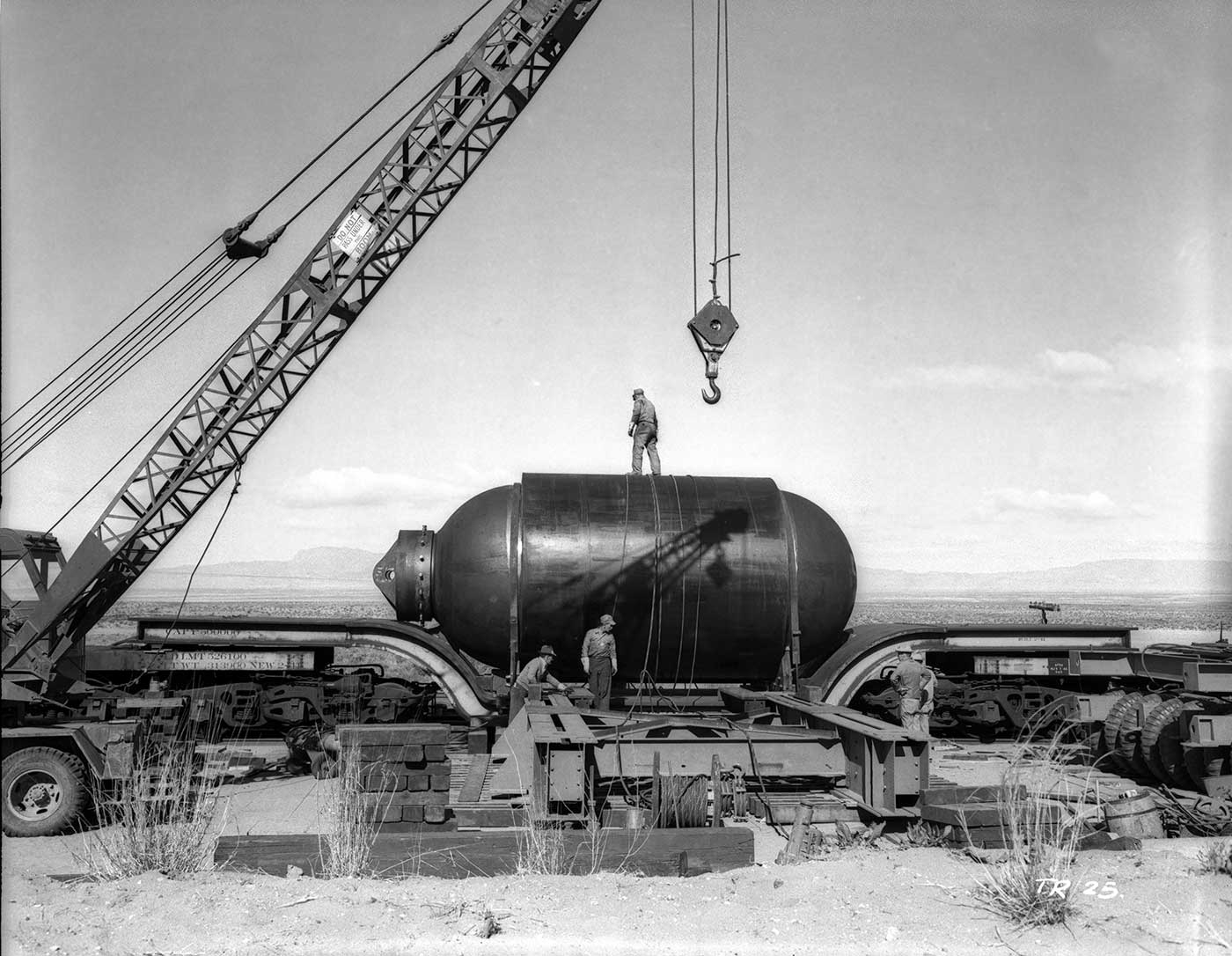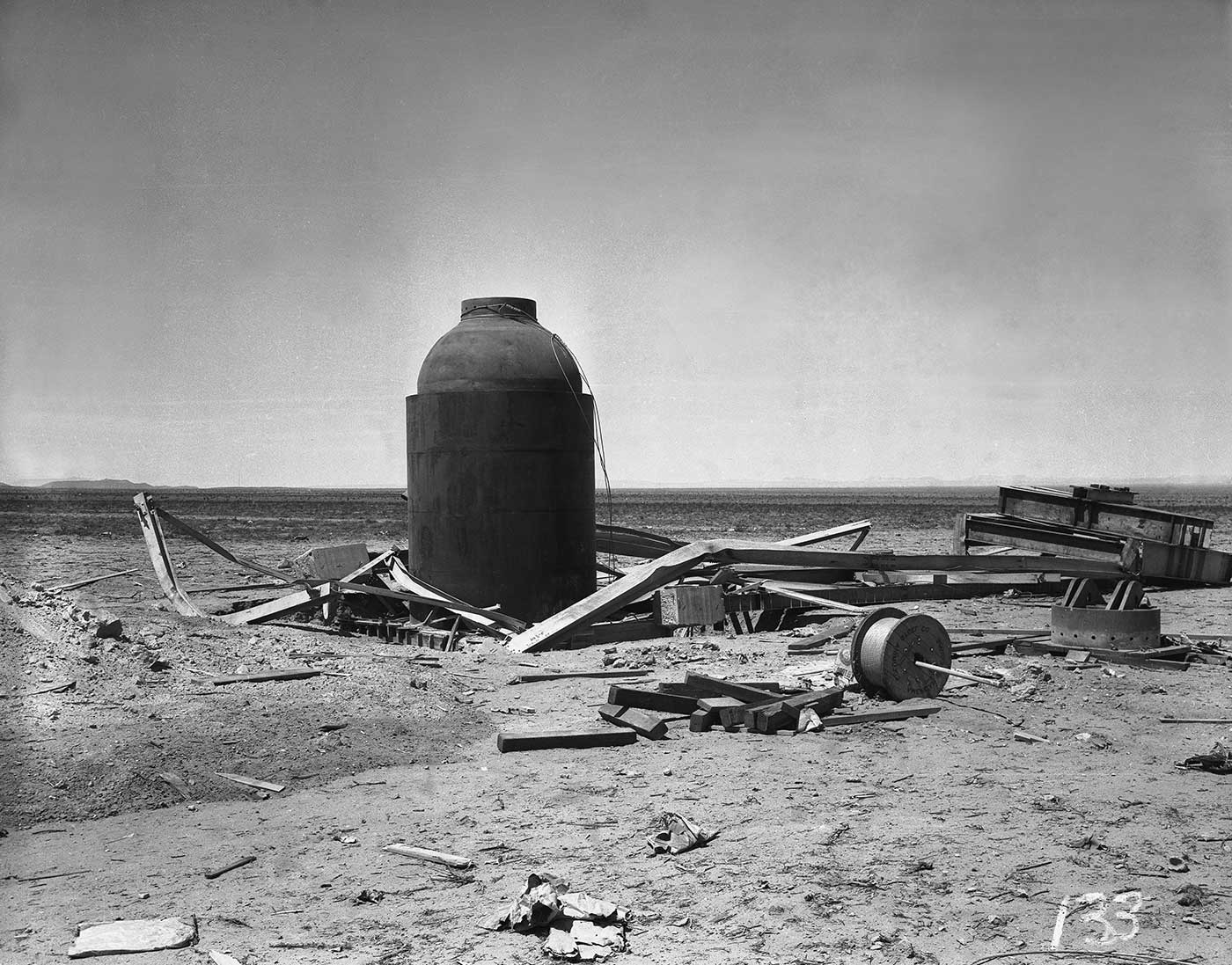Jumbo
The bomb design to be used at Trinity Site actually involved two explosions. First there would be a conventional explosion involving the TNT and then, a fraction of a second later, the nuclear explosion, if a chain reaction was maintained. The scientists were sure the TNT would explode, but were initially unsure of the plutonium. If the chain reaction failed to occur, the TNT would blow the very rare and dangerous plutonium all over the countryside.

Because of this possibility, Jumbo was designed and built. Originally it was 25 feet long, 10 feet in diameter and weighed 214 tons. Scientists were planning to put the bomb in this huge steel jug because it could contain the TNT explosion if the chain reaction failed to materialize. This would prevent the plutonium from being lost. If the explosion occurred as planned, Jumbo would be vaporized.

Jumbo was brought to Pope, N.M., by rail and unloaded. A specially built trailer with 64 wheels was used to move Jumbo the 25 miles to Trinity Site.

As confidence in the plutonium bomb design grew it was decided not to use Jumbo. Instead, it was placed in a steel tower about 800 yards from ground zero. The blast destroyed the tower, but Jumbo survived intact.

Today Jumbo rests at the entrance to ground zero so all can see it. The ends are missing because, in 1946, the Army detonated eight 500- pound bombs inside it. Because Jumbo was standing on end, the bombs were stacked in the bottom and the asymmetry of the explosion blew the ends off.

To calibrate the instruments which would be measuring the atomic explosion and to practice a countdown, the Manhattan scientists ran a simulated blast on May 7. They stacked 100 tons of TNT onto a 20-foot wooden platform just southeast of ground zero. Louis Hemplemann inserted a small amount of radioactive material from Hanford into tubes running through the stack of crates. The scientists hoped to get a feel for how the radiation might spread in the real test by analyzing this test. The explosion destroyed the platform, leaving a small crater with trace amounts of radiation in it.